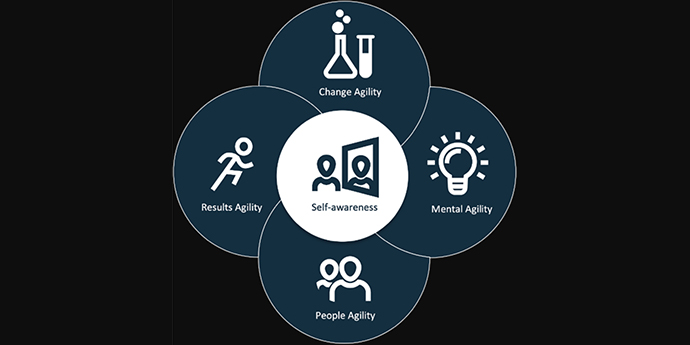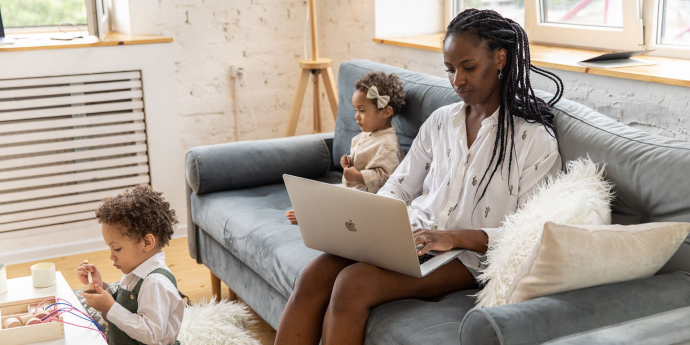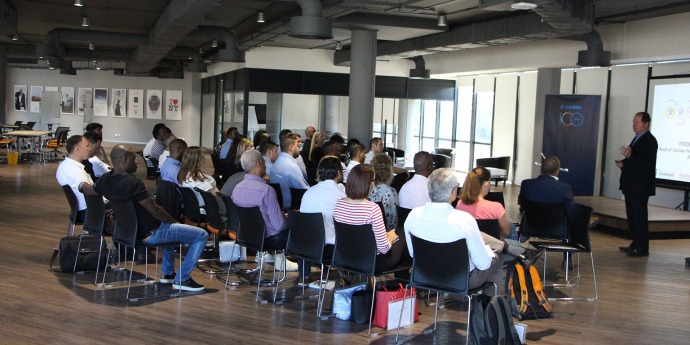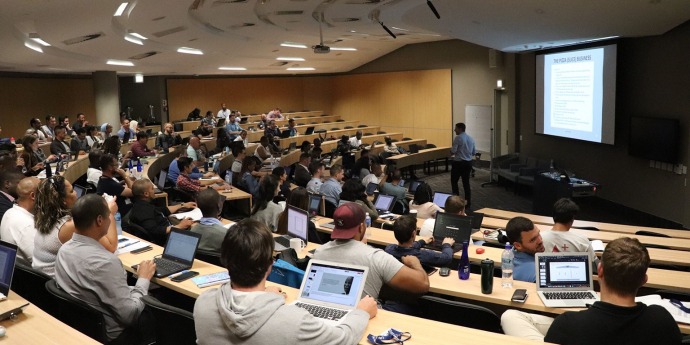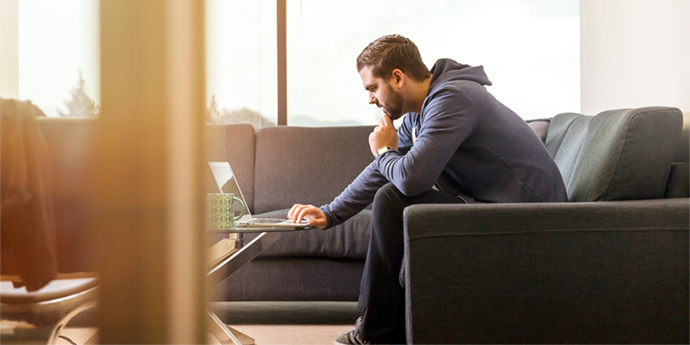Working from home has been a blessing for some but brought new demands and strains for others — including a rise in mental health issues. Now, as millions of people start to trickle back to more formal workplaces, is an opportune time for employees to take ownership of their happiness at work.
Working from home has been rich fodder for TikTok over the past months. Across the globe, TikTokkers have regaled themselves and their followers with video skits on the joys and pitfalls of working from home. They’ve made light of the distractions of progeny, partners and pets; of their pyjama-bottomed morning ‘commute’ from bed to kitchen-table desk; of the slow attrition of old routines; and finally, for some, of the return to the office.
But many of these videos skim over an important reality of the world’s sudden and dramatic shift to remote working as a result of the COVID-19 lockdowns: The move plunged many employees into uncharted mental territory.
Unaccustomed to managing their time when working from home or not knowing when to switch off — or perhaps fearful of losing their jobs — employees may push themselves harder. Anxiety levels have increased. And both employees and employers have had to learn to measure expectations and performances in a world far removed from the one they’d grown used to.
A permanent shift or a part-time experiment
The necessary evolutionary adaptations were easier for some professions and industries than others. Many have even grown accustomed to working from home. So much so that questions now arise as to which model works best? How many workers would return to conventional places of work? Or how often?
A cost-benefit analysis of this new arrangement is unlikely to provide easy answers. On the one hand, office spaces are expensive for employers, and for employees, so is the commute to and from work, both in terms of financial cost and in time spent. But even if they recognise that they have the option, some businesses may prefer to stick with the tried and tested arrangement.
We can expect to see that strategies will differ. In a recent article, ‘The Economist’ quoted the head of Twitter saying that the company’s staff can work from home “forever” as well as, in sharp contrast, the founder of Netflix describing home-working as “a pure negative”. Those differences in attitude may explain why, as the same article reported, around 84% of French office workers are back at their desks, while fewer than 40% of British have followed suit.
The pros and the cons for workers
The jury is out as to which working environment works best. While some people have thrived during this period of remote working, especially if it offers a reprieve from a hostile work environment and/or toxic leadership, or if they simply dislike their colleagues, many have reported a rise in stress and mental health issues.
Common challenges of working from home include learning to juggle domestic duties with work commitments within the same space, engaging with work and work colleagues online amid a cacophony of distractions, and being cut off from the structural and informal support available at the office, are just some of them. Many people have reported a rise in loneliness. Humans are social creatures, wired to engage with others.
Additionally, the inability or reluctance to ‘switch off’ from work has been exacerbated by COVID lockdown. The psychological switch associated with moving from one physical place to another, signalling a shifting of roles, is even harder to flip when the office and the kitchen table are one and the same. On top of this, some are anxious about the health risks of the pandemic itself, to themselves and loved ones. For others the threat of redundancy looms large.
Not surprisingly, the downside of working from home has taken on gendered dimensions. Research has suggested that female academics have seen a decrease in productivity compared to men. This would likely be the case for other professions as well, as families fall back on ‘traditional’ gender roles, with women shouldering the bulk of childcare and education. As such, the opening of schools is likely to assist some parents, particularly mothers, to better assess the benefits and drawbacks of working from home.
How to maintain one’s mental wellbeing wherever you are working
There is no ‘one size fits all’ solution to optimise happiness at work, whether working from home or in an office, and developing suitable coping mechanisms is a uniquely personalised exercise. Nevertheless, there are a few simple behavioural adaptations that can help. For example, those who feel isolated at home may benefit from increased socialisation outside of working hours, or greater on-line interactions during working hours. Employees who feel work encroaching into their personal lives need to find ways to disconnect from work, perhaps by setting up a dedicated office space or desk, switching off emails at the end of the day, and letting colleagues know when they are not working.
Workers experiencing burnout or anxiety also have the option of reaching out to HR or to their line managers to ask for help. There is also an abundance of free online resources now available to assist, from fitness tutorials and meditation apps to depression and anxiety groups.
Above all, it is important to remember that we are living in unusual times right now. The pandemic has served us with a painful reminder that we need to dramatically change our lives, to adopt practices that will serve our mental wellbeing now and beyond the global pandemic. As such, being self-demanding or too critical of one’s performance in times of such change is a recipe for poor mental health. The need to practise self-compassion is possibly greater now than ever.
Dr Babar Dharani is a senior lecturer with the Allan Gray Centre (AGC) for Values-Based Leadership at the University of Cape Town Graduate School of Business (UCT GSB).



















